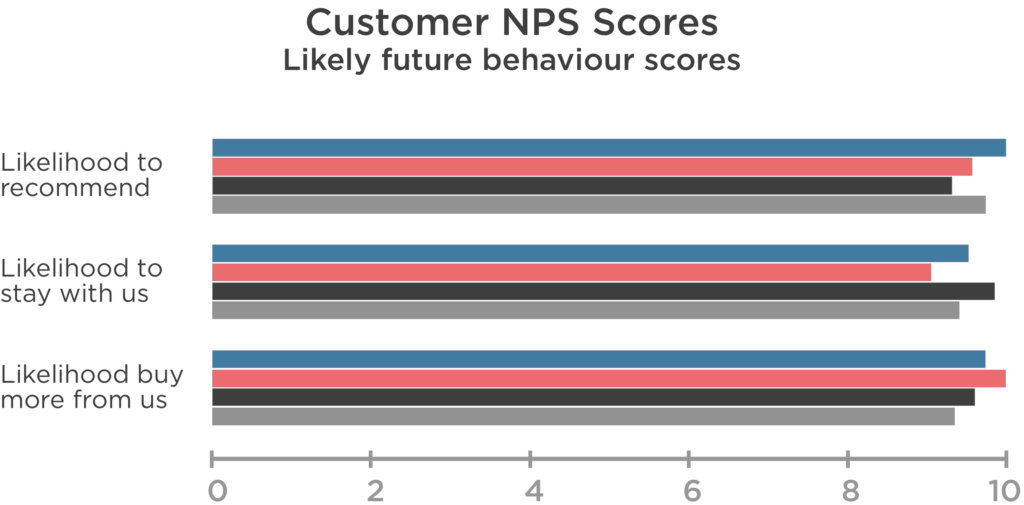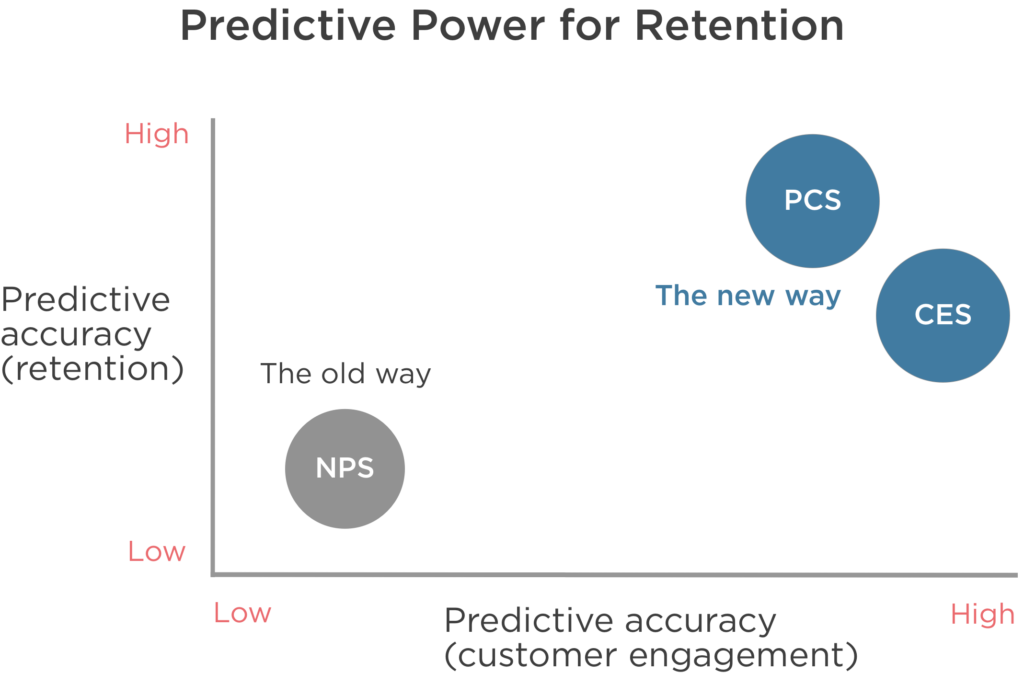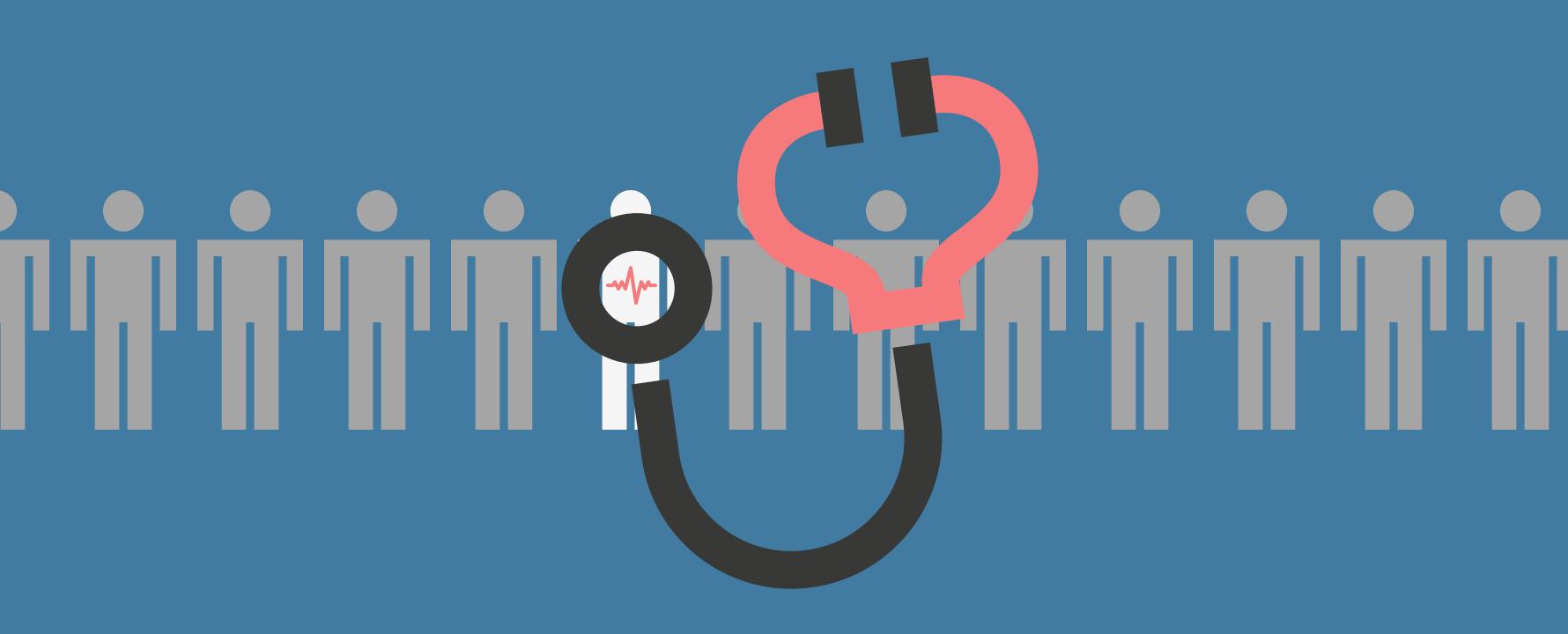Are your CX metrics predicting actual retention behaviours to drive your retention strategy, or ‘aspirational’ indicators likely missing the mark?
The old way: Predictive metrics based on ‘likely’ behaviour
NPS, and other similar metrics assumed to be valid predictors of future behaviours with customers, are the go-to metrics for most CX executives. Only a tiny proportion of customers from a pool of many millions, in the case of large B2C corporations, respond to surveys, yet the results are presumed to represent the entire customer base. The other concern is that these metrics have been around for a long time and were created in a different era, pre-digital, thus are not an accurate measure of current retention behaviour.
The old result: Businesses struggle to develop accurate retention strategies
In many cases, the process of collecting NPS is ‘gamed’ with customers submitting higher scores than would truly represent their intention of staying. The result is something like we see in the example below, which on the face of it tells the business things are ‘sweet’. So businesses continue to track these metrics believing they are valid, even though customer churn remains high.

NPS is overused being included in every purchase, service interaction, exit, satisfaction and market survey. Additionally, incentives for completion of surveys promotes a reaction response, rather than a genuine authentic response that transpires to actual future behaviour.
So the question is, what are the best metrics for businesses to be relying upon to predict retention behaviours with their customers?
The new way: Knowing which metrics predict ‘actual’ retention behaviours
Retention is all about showing we care when a customer needs help and making that help effortless for the customer.
What drives customer behaviour post acquisition or sale comes down to the value of the product or service offering (Poole, D, 2020, Gartner), which is made up of price and quality. Quality comprises of all the associated attributes of the product or service; sales promise accuracy, communication, billing, responsiveness when help required and most importantly service. Service includes all interactions with customers and the critical elements of service come into play when customers need help or have a query.
There are two fundamental non-negotiable factors associated with servicing customers post sale, the effort associated with receiving service and the care afforded to the customer. Effort is too often seen as synonymous with automation; however, the customers’ view is, how easy is it to get help when they need it. Making it difficult to get help is seen as not caring.
Customer’s experience of a supplier caring, and ease with getting help are the pivotal predictors of retention behaviour. Therefore, the two most reliable indicators of likely retention behaviour with customers, i.e. how likely is it they will stay, are the CES – Customer Effort Score and the PCS – Perceived Care Score.
The CES consists of a group of variables relating to the effort customers need to expend interacting with you as a supplier, particularly when they need help.
The PCS consists of a group of variables relating to how much customers perceive you care and value them, inclusive of all interactions they have with you as a supplier. Most importantly how service focused they feel you are, and do they feel you care when they require help.
The new result: Metrics to accurately predict retention behaviours with your customers
If a business was to switch to measuring the PCS and CES with their customer base they would acquire insights into whether customers see them as a supplier who cares. High PCS and CES scores indicate that customers feel valued and that you care when they interact with you as a supplier. Most importantly high scores indicate they are receiving the experience they expect which means they will stay.

Unique Useful Insight
The very nature of business where a customer is treated royally during the acquisition process and then in many cases, treated like a number once on the books, is a precursor to churn risk. Everyone knows retaining existing customers is a far better strategy on every level. The problem has been business decision makers lacking trustworthy evidence to reliably predict retention behaviours and allocate budget to retention development. When we are able to predict which customers need help and deliver service that is effortless for them, this changes everything. Customers now perceive you care and they are valued.
Poole, D, 2020, A Better Way for Service to Predict Customer Loyalty, Gartner.
We at SmartMeasures are helping our clients accurately predict when a customer needs help and deliver proactive service communications to demonstrate we care. If you would like to know more, get in touch.


